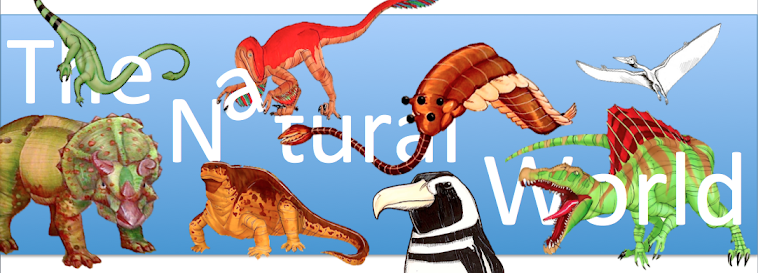The
dog that was once owned by George Lucas has gone down in history in more ways than one. One very famous example stems from the dogs name: Indiana. This inspired the first name of the swashbuckling adventure hero "Indiana Jones" from the film franchise of the same name. Another very important legacy of Indiana (the dog) stems more from appearance. Apparently, the idea for Chewbacca, the lovable Wookiee from the
Star Wars franchise, came to Lucas when he saw Indiana sitting up in the passenger seat of Lucas's own car! In fact, the name "Chewbacca" apparently is derived from the
Russian and Ukrainian word "
собака," which means dog.
Ben Burtt, the sound editor for all six Star Wars movies, recorded a number of
bear sounds for the purpose of creating Chewbacca's speech. Along with bears,
cats such as the
lion and the
mountain lion were also recorded. Camels were used in addition to these fiercer companions. These were by no means the only contributions by the animal world to the sounds of Star Wars, however! For example, when it came to the patrons in the Mos Eisley Cantina in Episode IV: A New Hope, many different tactics were utilized. Synthesized Latin and chopped-up
Swahili served for two of the customers, but animals were used as well. One patron's laughter stemmed from a hippopotamus, while anothers came from a spring peeper tree frog.
That's not all when it comes to the Cantina scene, however! Ponda Baba was the Aqualish alien, below, who, along with his friend Dr. Evazan, picked a fight with Luke Skywalker and Ben Kenobi. He was "voiced" by a walrus. Meanwhile, besides "dogs growling and
bats squeaking," the "laughter" of
hyenas was also used for the laughter of some of the Cantina's other patrons.
Here are some more sounds, and what kind of animals contributed to their creation:
Geonosians: Here is what Matthew Wood, the actor who brought
the voice of the famous and much-loved General Grievous to life, has to
say regarding the sounds made by the Geonosians:
"I
recorded the mating calls of
penguins as they came back from the
Antarctic to little Phillip Island in Melbourne. Other sounds came from
when I was up in the rain forest; I was in a
flying fox area, and they
let me get close to these two flying foxes. One of them had a banana,
but the other one wanted some of it, so they started fighting. They
were really mad, and I recorded that whole thing. So, for the
Geonosians, Ben [Burtt] combined mating penguins and fruit bats fighting
over a banana."
The penguins that he is referring to are
the korora, commonly called the little blue penguins,
discussed in a recent post. They would also
not have been returning "from the Antarctic," as these birds, the
smallest known penguin, past or present, are not cold-weather birds, and
really stick pretty close to
Australia.
Boga: One of my absolute favorite characters (yes, I know,
technically she is just an animal, but still) was voiced by a
combination of one of my favorite REAL animals, the
Tasmanian devil,
along with a few yelps from dogs and
coyotes.
Wampa scream: An
elephant bellow, overlied by the squawk of a sea lion.
Mynocks: The whinny of a
horse played backwards at half the normal speed, beginning with the bark of a seal.
Ugnaughts: The noises made by these pig-like aliens were primarily from the pups of an arctic
fox, as well as the mother, but a bit of "raccoons in a bathtub" was mixed in.
Rancor Noises: The dachshund owned by the neighbors of Ben Burtt, the Syllas, barking, growling, and hissing.
The Sando Aqua Monster: The deep growls that this massive creature from Episode I: The Phantom Menace makes were actually from the throat of Burtt's then-three month old daughter, named Emma. "At one point, she had a growl in her voice when she was crying. I thought,
I can use this! So I recorded that and then lowered the pitch way down in the computer."
Kaadu: The snorts of the kaadu were recorded from the sounds a
whale made out of its blowhole when surfacing at San Diego's Marine World.
Kaadu/Gamorrean Guard: Both of these creatures (the grunts of the kaadu, and everything for the Gamorrean Guard) were recorded from pigs. Unsurprising, at least for the Gamorrean, given his appearance!
Poggle the Lesser - The leader of the geonosians (that is, until Queen Karina the Great is revealed in season two of the
Clone Wars) was voiced in a number of different ways, but partially through "Swahili-type vocal clicks."
Acklay: This creatures noises and shrieks were created from reworked
dolphin noises, as well as a few pig sounds.
Octuparra Droids: The sounds from these massive droids from the Clone Wars were partially created by cows.
Gor: Pet of the aforementioned General Grievous, Gor was voiced by a mixture of a lion and a
vulture.
Gundark: This creature, first mentioned in the original trilogy ("You look strong enough to pull the ears off a gundark," said Han Solo to Luke Skywalker after his traumatic ordeal at the hands [haha irony (because the wampa gets his hands cut off)] of the wampa) was created from a conglomerate of a horse and a shrieking parrot.
I have to say, I think one of the coolest places to visit would be
Skywalker Sound, the place where all of the sound and stuff for the Star Wars movies and tons of other movies are made, organized, edited, and such. If they gave tours, then I would totally make the trip out there! To take a tour of Skywalker Ranch would be absolutely fantastic!

























